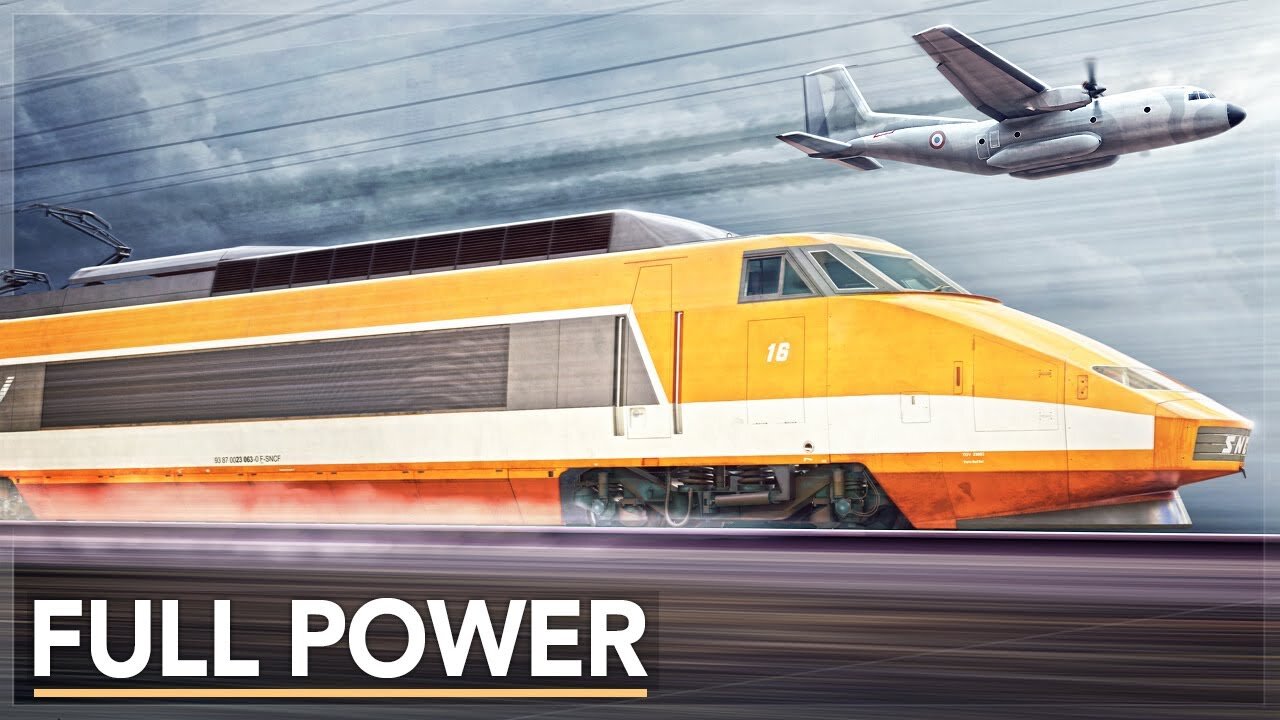Premium Only Content

How This Train Beat The Plane: The TGV
In the 1950s many believed that railways were an antiquated 19th century technology, soon to be replaced by faster and more convenient forms of transportation. Short and medium-haul jet travel offered unparalleled speed, while the automobile promised unmatched flexibility and convenience. In France, the fastest express trains (Le Mistral) only averaged speeds of just 120km/h.
Although French engineers had set remarkable railway speed records during the decade, including reaching 331 km/h in 1955, few considered railways to have much of a future. To compete against newer forms of transport, trains would need faster service speeds. This would require engineering new locomotives, as well as rebuilding rail lines with greater precision, gentler curves, smaller grades and in-cab signaling. The effort and resources required seemed too great to be worthwhile.
Opening in 1964, the Shinkansen was the world’s first true high-speed railway. Connecting Japan’s two largest cities (in the 1960s), Tokyo and Osaka, and travelling at speeds in excess of 120 mph (200 km/h), the new specially-designed Shinkansen trains had the highest service speeds in the world.
While the Shinkansen was viewed with admiration around the world, French railway engineers were still world leaders in areas of acceleration, braking, and electric pickup at high speeds. In fact, many of the technologies used on the Shinkansen were pioneered by French railway engineers.
Inspired by the Japanese experience, the SNCF began experimental work on a high-speed rail network for France. Called the TGV ( Train à Grande Vitesse, or "high-speed train" in French), they focused on a more cost-effective approach that would leverage existing infrastructure as well as newly developed technologies like gas turbine propulsion. But the road to high-speed rail in France would be fraught with skepticism, opposition and competing visions for the future of transport.
References:
Jacob Meunier, On the Fast Track. French Railway Modernization and the Origins of the TGV, 1944–1983 (London: Greenwood 2002)
-
 4:13:32
4:13:32
Nerdrotic
18 hours ago $71.82 earnedSUPERMAN Drops, Disney Cuts WOKENESS? Hollywood DEI is DEAD | Friday Night Tights 333 Little Platoon
191K71 -
 1:23:14
1:23:14
Talk Nerdy 2 Us
14 hours agoSpecial Guest - Next UFC Superstar - Dani Aleksovska
93.9K1 -
 1:02:40
1:02:40
Man in America
16 hours agoThe Elites Are Losing Their War on Our Children w/ Robert Bortins
75.2K44 -
 3:30:43
3:30:43
I_Came_With_Fire_Podcast
19 hours agoGovt' Shutdowns, VA Scandals, MORE Drones, Syrian Strikes and staged rescues , and The DHS!
148K38 -
 56:55
56:55
The StoneZONE with Roger Stone
14 hours agoTrump Should Sue Billionaire Governor JB Pritzker for Calling Him a Rapist | The StoneZONE
109K12 -
 59:21
59:21
Adam Does Movies
14 hours ago $3.57 earnedMore Reboots + A Good Netflix Movie + Disney Live-Action Rant - LIVE
70.1K5 -
 36:28
36:28
TheTapeLibrary
23 hours ago $13.53 earnedThe Disturbing True Horror of the Hexham Heads
92.4K21 -
 6:08:00
6:08:00
JdaDelete
1 day ago $8.23 earnedHalo MCC with the Rumble Spartans 💥
68.1K8 -
 3:52:22
3:52:22
Edge of Wonder
17 hours agoChristmas Mandela Effects, UFO Drone Updates & Holiday Government Shake-Ups
58.2K20 -
 1:37:36
1:37:36
Mally_Mouse
16 hours agoLet's Play!! -- Friends Friday!
58.2K1